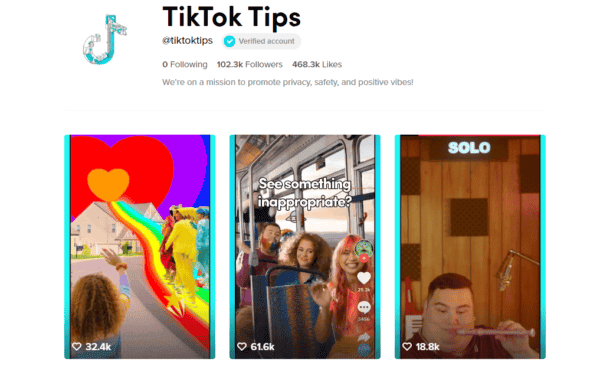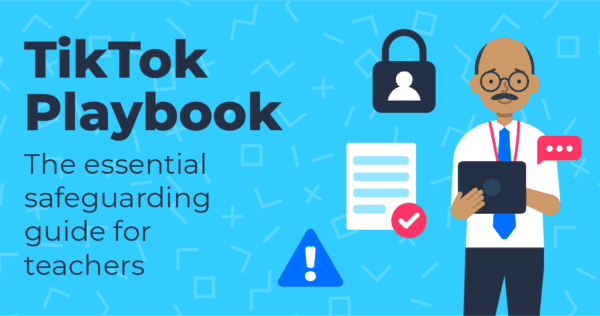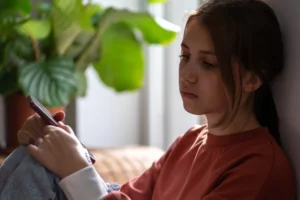What is the minimum age for TikTok?
13 is the minimum age according to TikTok’s terms and conditions.
How does TikTok work?
Once signed up and logged in, you can either search for popular categories, creators, or known friends, or you can create the videos yourself. But many people just use the app to follow content creators.
How to create an account
Click on the ‘person’ icon and you can choose to sign up with an email, phone number, or existing Google, Facebook, Twitter or Instagram account.
Once you have selected an option, you are then asked to enter your date of birth. If it is below the age of 13, the app displays the following message: “Sorry, looks like you’re not eligible for TikTok. But thanks for checking us out!”
Your feed highlights what is going on in your community and a separate ‘For you’ feed shows tailored recommendations for you.
Why do teens love TikTok?
It allows them to express themselves through short-form video clips to gain a following and build a community around their passions.
It also features some great special effects that users can apply to their videos to make them more unique. You can also cross-post the content on other platforms (such as Instagram) to share it with more people.
What do parents say about the app?
Seeing inappropriate content
Parents have expressed concerns about the inappropriate language of some of the videos posted which may make this less suitable for younger children.
Contact from strangers
Predators seeking to connect with children is another privacy and security risk on TikTok. Set up privacy and security settings to limit this contact.
What should parents be concerned about?
- When you download the app, users can see all the content without creating an account although they are not able to post, like or share anything until they’ve set up an account on the app.
- By default, all accounts are public so anyone on the app can see what your child shares. However, only approved followers can send them messages.
- Users can like or react to a video, follow an account or send messages to each other, so there is the risk that strangers will be able to directly contact children on the app.
- Children may be tempted to take risks to get more of a following or likes on a video so it’s important to talk about what they share and with who.
- Need to delete your account? Go to Me>Tap …, located on the top right corner>Tap Manage account > Delete account. Follow the instructions in the app to delete your account.
Does TikTok have any e-safety features?
Digital Wellbeing
Like Facebook and Instagram, it has a digital wellbeing element (which is password protected) that alerts users who have been on the app for more than two hours. You can also turn on ‘restricted mode’ to filter out inappropriate content on the app.
Private account
You can set an account to be private so that all videos can only be seen by the creator and no one else on the platform. With a private account, you can approve or deny users and limit incoming messages to followers only.
Please note that even with a private account, your child’s profile photo, username, and bio are still visible to all users on the platform. You can manage who can comment, duet and direct message your child on the app.
Privacy settings
TikTok users under 18 will have their accounts set to private-by-default, which means only someone who the user approves as a follower can view their videos. The change is part of a wider package of measures designed to drive higher standards of user privacy and safety. Download the updated privacy settings here.
Internet Matters CEO Carolyn Bunting says: “The safety of children and young people online needs to be a priority for organisations across the industry.
The disabling of direct messaging on the TikTok platform for under 16s is a significant move in prioritising the safety of their young users and we are pleased to see the protection of their younger users taking precedence in their product changes.
TikTok provides fantastic opportunities to be creative and have fun, especially in these unprecedented times and it is encouraging to see them invest in a number of initiatives that help to create a safer environment for young people.”
Check out our TikTok privacy and safety parental controls to learn more.
Latest TikTok updates
June 2022:
TikTok has announced plans to support screen time management with new prompts to promote breaks. This complements the already-existing features that allow users to set daily limits for themselves. The screen time dashboard will also let users view their usage statistics to see how they spend their time in-app. This feature comes after our research with TikTok that found young people would like help to independently manage their screen time. Learn more about the upcoming feature here.
As of Jan 2021, the following features have been implemented:
- New privacy and security settings: TikTok users under 18 will have their accounts set to private-by-default (as of Jan 2021) as mentioned above.
- Tackling fake news and misinformation: A new fact-check feature that will confirm and remove content if false (as of Feb 2021). Read more here.
- Prevention of bullying feature: Creators are now able to control what comments can be posted on their content before it goes live. In addition, users who comment will get a prompt advising them to reconsider their comment if it’s inappropriate (as of March 2021). Read more here.
- Tightening the options for commenting on videos created by those ages 13-15: Younger users can now choose between “friends” or “no one,” and the “everyone” comment setting is being removed.
- Changing Duet and Stitch settings: The broader TikTok community won’t be able to use those features with content created by people under 16, though anyone can Duet and Stitch with eligible content from users over 16. For users aged 16-17, the default setting for these features will now be set to Friends.
- Removing the ability to download videos created by those under 16: For users ages 16-17, this function will now be set to “off” by default, with the option to allow downloads of videos if a user chooses.
- Setting “suggest your account to others” to “off” by default for accounts ages 13-15.
- Bedtime block on app alerts – TikTok has announced a feature that prevents teenagers from receiving notifications past their bedtime. They will no longer send notifications after 9 pm to users 13-15 years old. But for 16 and 17 year-olds, notifications will not be sent after 10 pm.
How to report inappropriate content on the TikTok app?
You can report content that doesn’t follow TikTok’s Community Guidelines within the app, click here to find out how to do it on the app.
You can block followers ‘ by choosing the fan you’d like to remove and selecting ‘Block’ from the menu of options.
Be sure to update the TikTok app to ensure you are kept up to date with the latest features.









